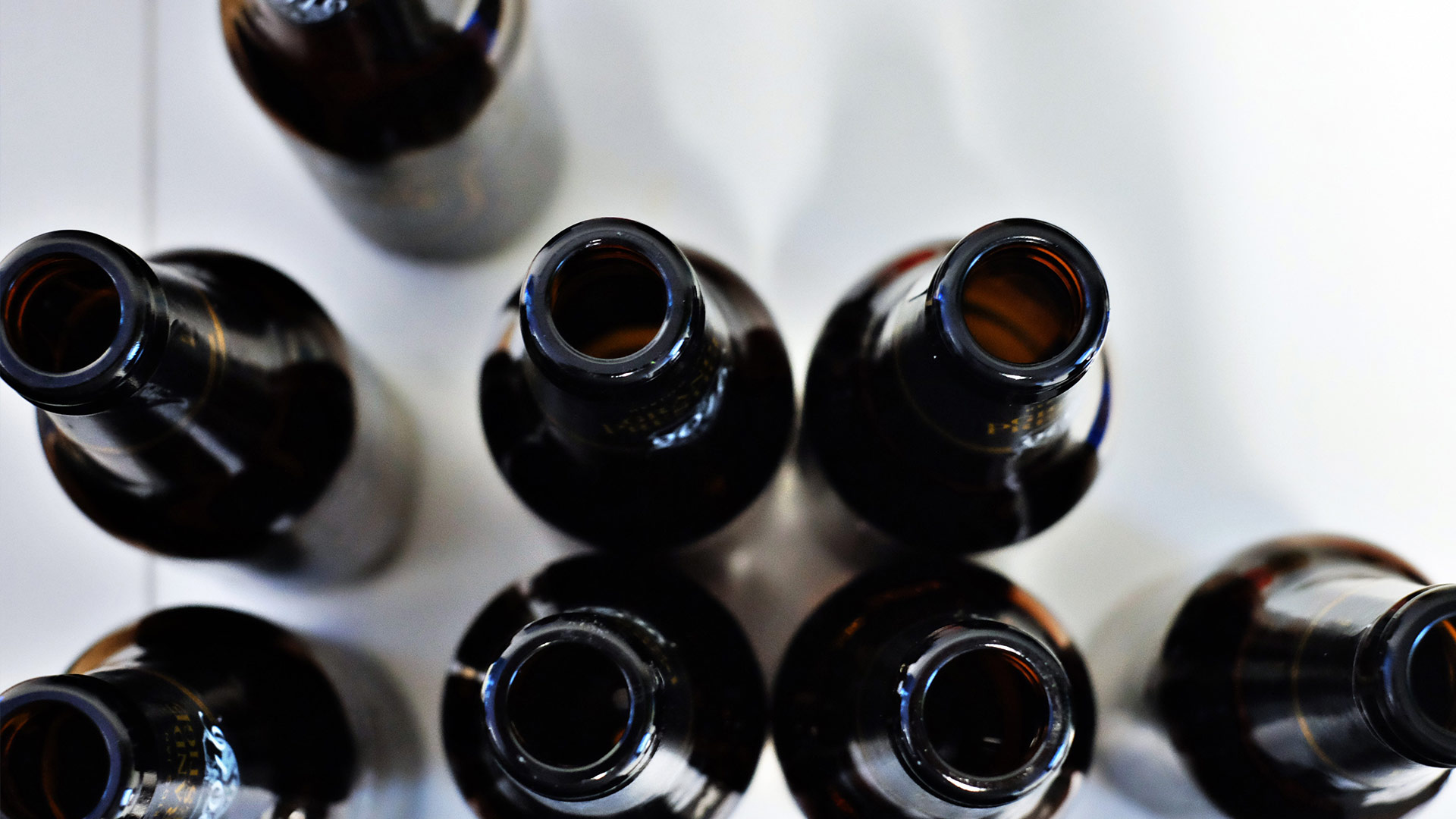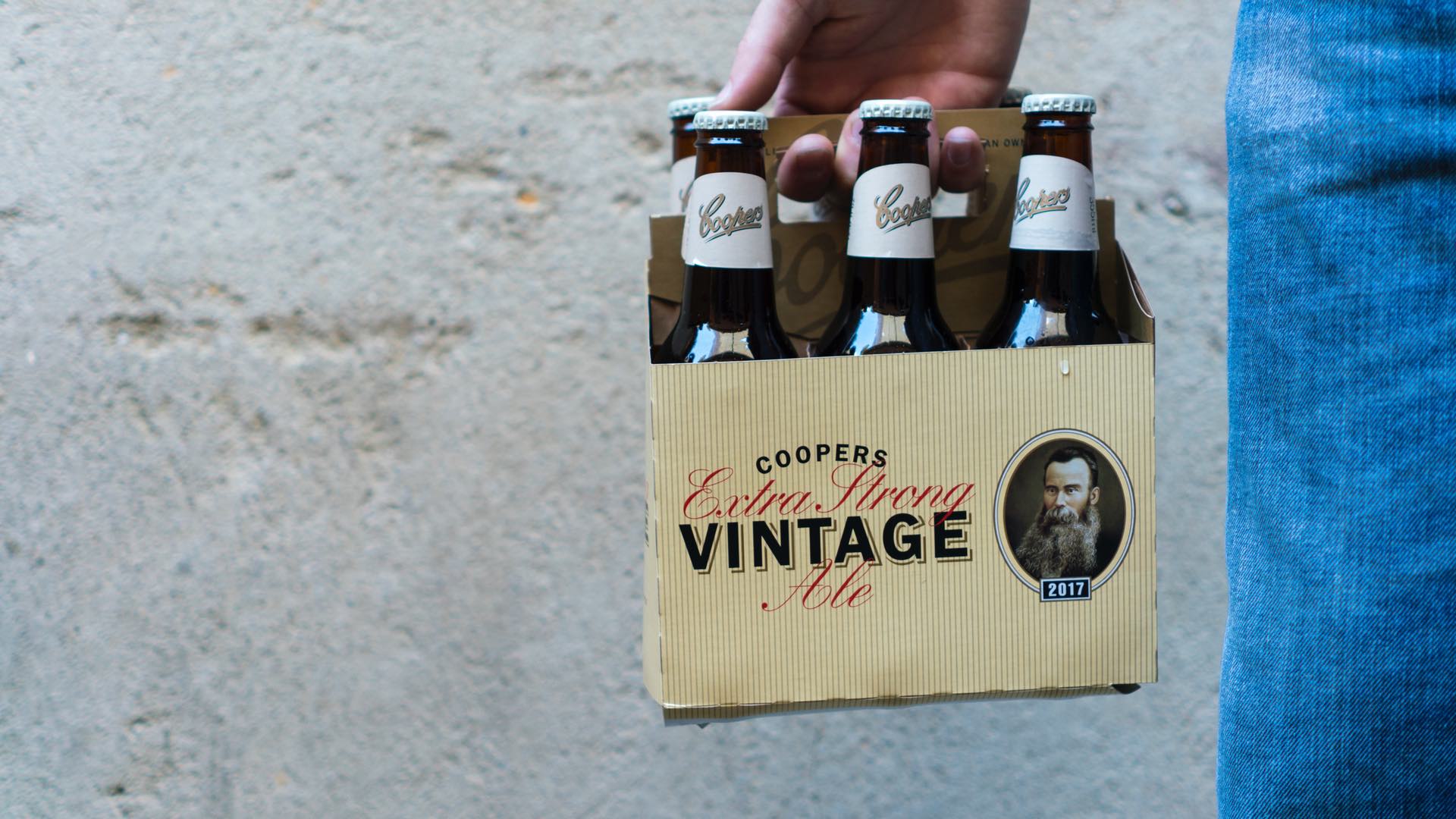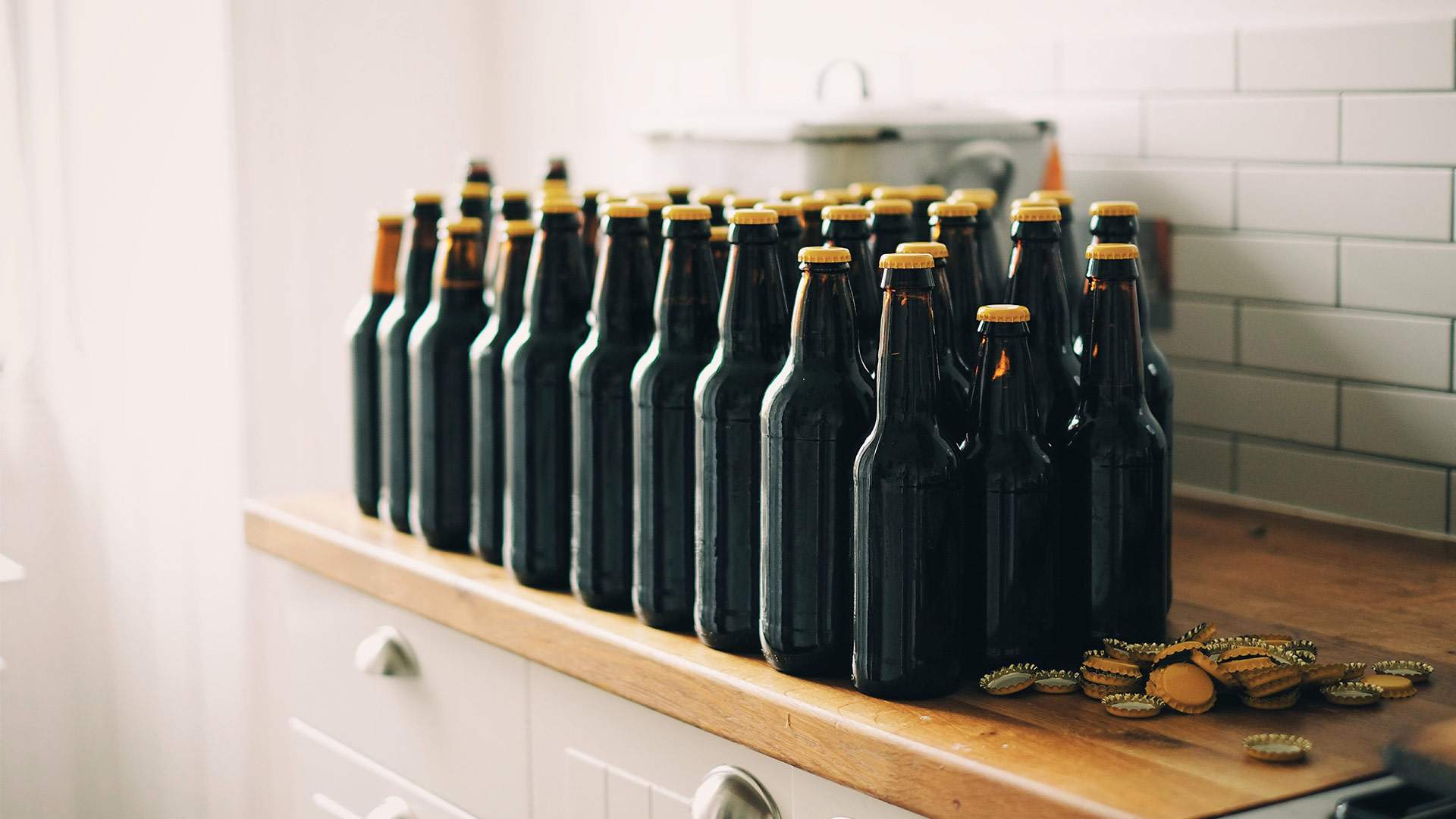Five Beers You Should Start Cellaring at Home
We've told you why and how you should start a beer cellar. Now, here's what you should put in it.
In partnership with
Look, some things are definitely better fresh. Things like like produce, sashimi and hot chips. But other things get better with age, things like you and, surprisingly, beer. There's an idea floating around that beer only belongs in the former category, but in celebration of Cooper's 2017 Vintage Ale release, we're shedding some light on the beers that age gracefully.
If you're intimidated by the idea of a cellar, don't be. Modern cellaring doesn't require you to own a sprawling mansion with a decked-out cellar door. All you need is a dark, cool and consistent space to cellar beer and bring out its mature flavours. A basement or garage will do the trick, as long as the temperature stays between ten to 12 degrees celsius and doesn't fluctuate. Also, keep the space between 50 and 70 percent humidity if you can, but if you can't, an air humidifier will help control any mould issues. The other very important item you'll need is self control — don't go downing your cellared beers just because they're there and you can. Good beers come to those who wait. (And so do some pretty tasty food and beer pairings.)
Once you've got the set-up, which beers should you choose? Which actually age well? Well, that's where we come in. Follow our lead, and look to these brews for your home beer cellar. In a year or so, you'll be thanking us.

STOUT
A good rule of thumb is that heavier beers with a higher alcohol content will cellar the best. Aim for beers that are heavy on malt and have an alcohol content of eight percent for good results. Stout is an excellent beginner's brew for cellaring. The word stout is even a synonym for heavy, determined and forceful, making it an ideal candidate to develop some extra depth. The rich, dark (but never heavy) texture of a stout starts off great, but is made even better with time. The roasted malt component, which is what gives the beer its depth, becomes even more complex.
The consensus on how long to cellar a stout for is mixed, but the best approach for a DIY beer-ager is through experimentation. Buy the brew of your choice in bulk (like Cooper's Best Extra Stout) and drink a few fresh, making sure to take notes as you go. Age the rest and every six months, repeat the experiment, each time taking notes. Everyone has different tastes, but when you have your perfectly aged stout, pair it with a slow-cooked pork roast or oysters.
DARK ALE
Dark ale is one of the lesser known dark beers, but its reputation (or lack thereof) is undeserved; this beer warrants a place in your DIY cellar, especially if you're into chocolaty, coffee flavours. Think of dark ale as a dessert beer — heavy, creamy and rich.
This strong flavour profile is what makes the beer excellent for cellaring, as it gets stronger, yet subtler, after a few years in the dark. For your home cellar, look for either barrel-aged or bottle-conditioned beer, like Cooper's Dark Ale. The active yeast contained in the bottle means they were designed to cellar well. Also note, thanks to their high alcohol content, dark ales can withstand a slightly higher temperature — between 12 and 14 degrees celsius — compared to their wheaty brethren, making this one a kinder brew for the home cellar novice.

VINTAGE ALE
From time to time, brewers will develop and release beers that are designed to age. Cooper's Vintage Ale is the perfect example and a must have for any DIY beer cellar — trust us, you'll be glad you added it in couple years.
In its infancy, it has a bitter and punchy flavour with pineapple and pear undertones (unusual flavours for such a heavy beer, but somehow it works).
During the production process, the introduction of live yeast as a conditioner gives this brew its longevity. So, if you're patient, you'll notice as the beer ages that the bitterness evolves into a sweet, caramel palette. Keep an eye out for these kinds of limited releases at your local as they're often designed — bottle and all — to be cellared, and may even become collector's items in years to come.

SPARKLING ALE
Now, we have just said that dark and heavy beers age well, so it may surprise you to see sparkling ale on this list. As a lighter brew, it may not be a go-to for most cellars, but sparkling ales do actually age beautifully and (if you do it right) you'll end up with a rich brew a lot faster than the heavier drops.
The cellaring process takes the sparking ale's fruity, floral notes and smooths them out. Any acidity, over-the-top sweetness or rough edges age into honeyed undertones. But make sure you check these beers more regularly than their darker counterparts as they'll mature a little faster. Also, make sure to keep the temperature under control; these brews won't react well to any heat.
Once you've nailed your desired aged flavours, pair them with bold tastes. Spicy food will match with the bubbles, and charcoal and rotisserie barbecue flavours will sit well with fruity tones.

SOUR BEER
If you like your beer a little bit tart, then turn your attention to sour beer. These acidic brews famously cellar well, but be warned, they're an unpredictable beer to begin with. Sour beers have always been brewed differently from other beers. Before modern brewing, beer was intentionally soured by introducing wild yeasts into the fermentation process — a method still used today. And although the modern brewing method is a little more controlled — brewers often use a Belgium yeast called brettanomyces to sour, instead of leaving the beer out to the elements — things can still go wrong.
On the plus side, if the initial brew goes well, the beer will taste even better a few years down the track, since brettanomyces take months to develop a full flavour profile. Even if you don't traditionally like sour beer, we recommend you hop on down to your local and try an aged sour — you might be pleasantly surprised. (Beer pun intended.)
A limited number of the 2017 Coopers Vintage Ale cartons have been released, so get to stocking your cellar with these brews quickly. Otherwise, you can find the vintage available on tap at a few key venues in Sydney, Melbourne, Brisbane and beyond. Find your closest pub serving the brew here.







